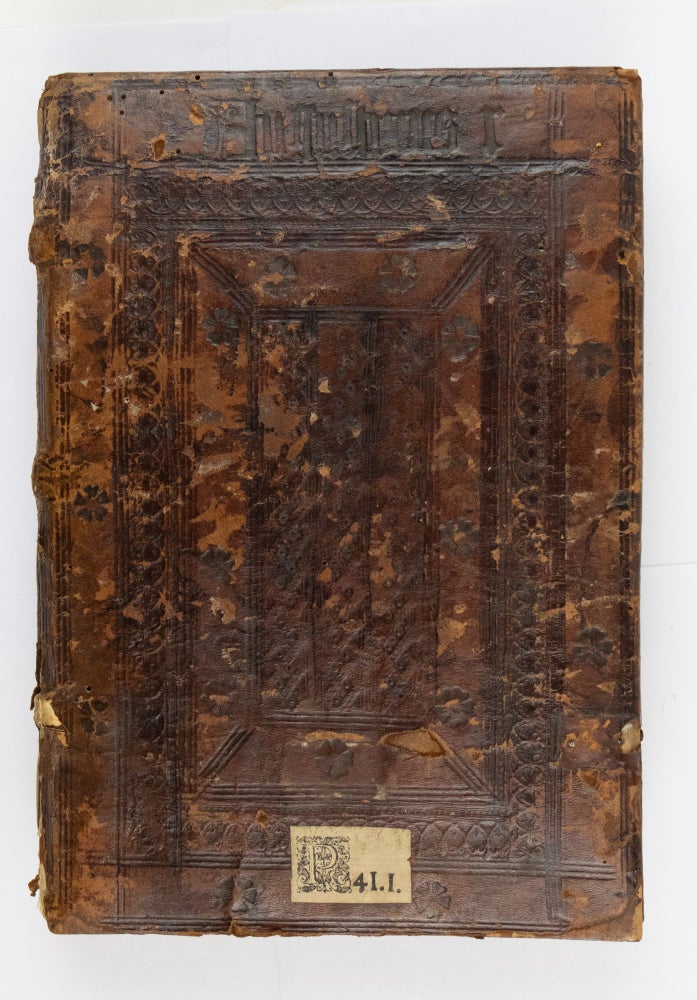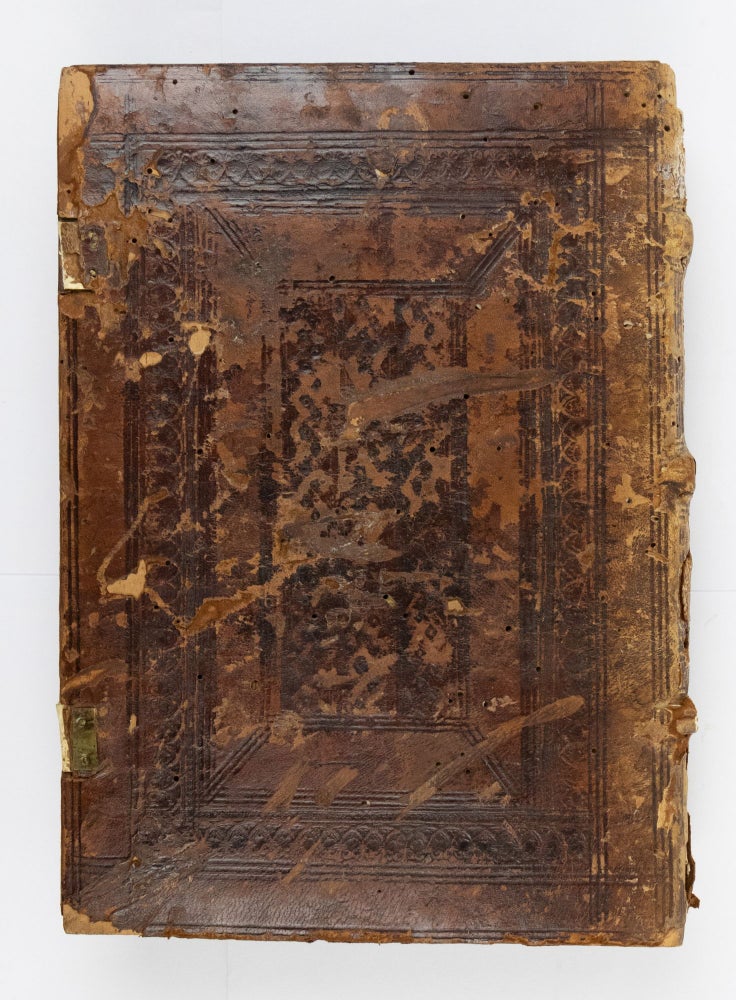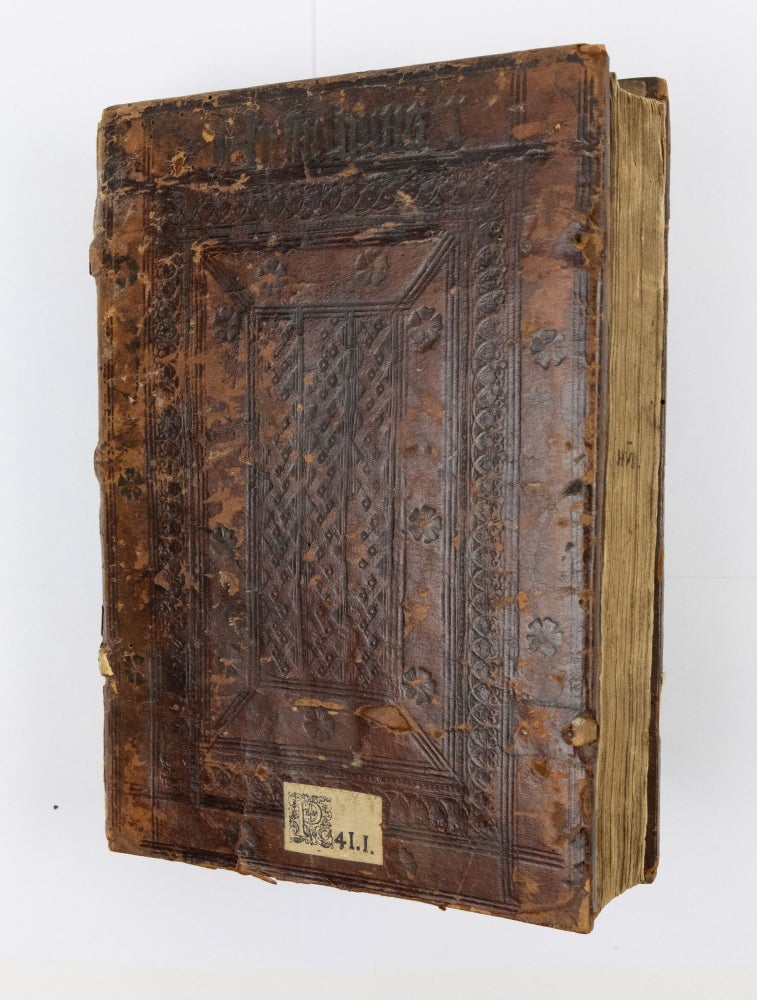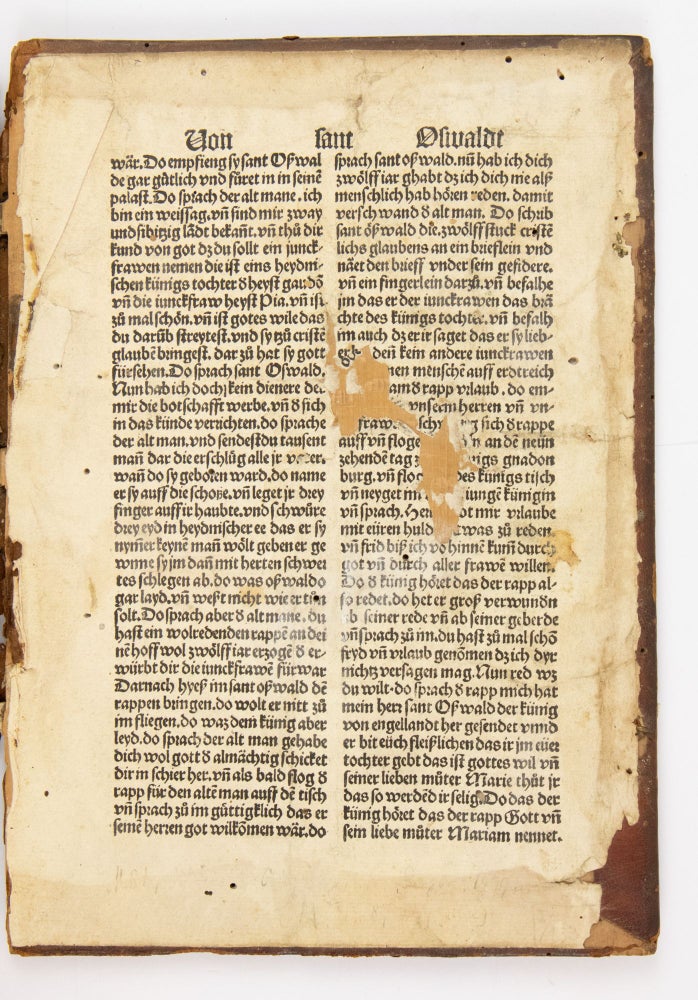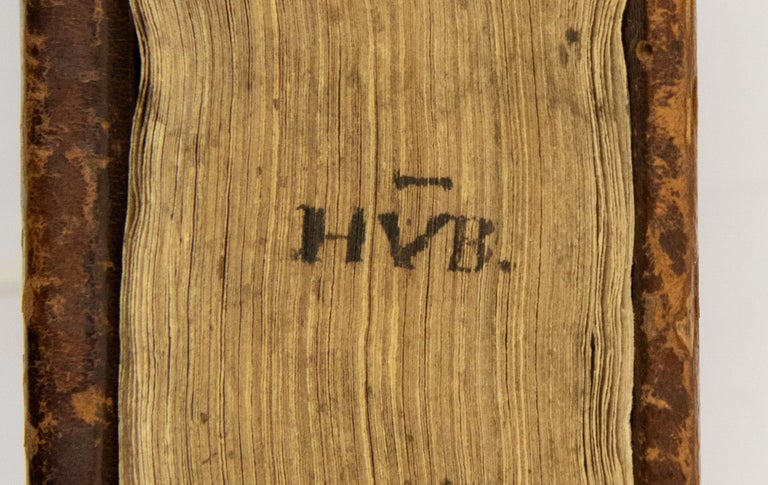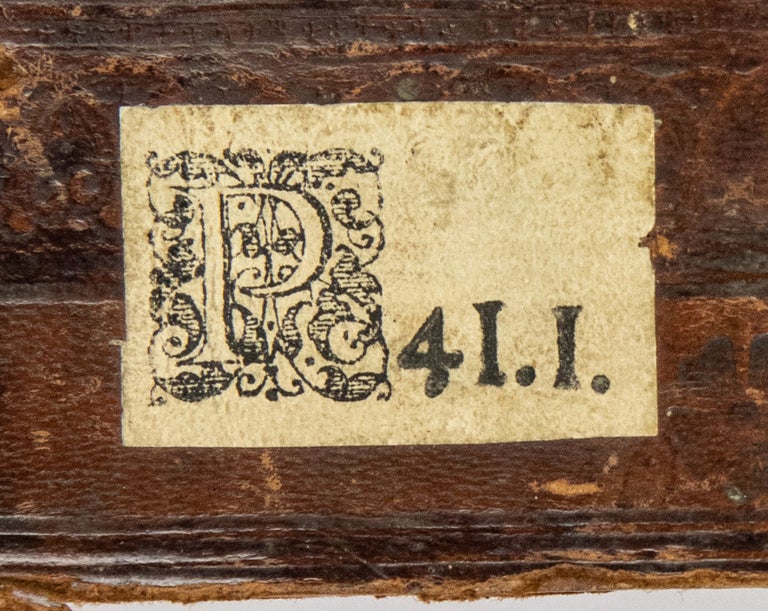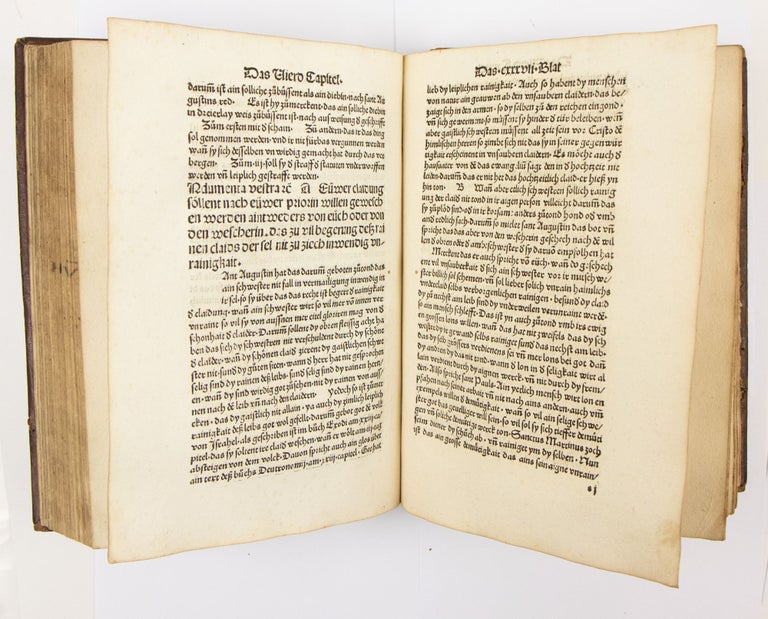Auslegung uber Sankt Augustins Regel
[Ulm: Conrad Dinckmut,] c., 1488.
Price: $16,000.00
Chancery folio: 26.5 x 19 cm. 206 leaves. [*]4, a-z/8.10. 7a 33 lines and foliation, 199 (207) x 119 mm. Types 147 and 121.
FIRST AND ONLY 15th c. EDITION.
A large copy bound in contemporary Augsburg blindstamped calf over wooden boards [Kyriss 81, EBDB w002144], title tooled on upper board, author’s name inscribed on fore-edge, label on upper board. The binding is a little worn, with a few wormholes, some leather missing from spine, lacking clasps. An early printed leaf has been used as a rear pastedown. Light dampstaining to the first and final few leaves, marginal paper flaw to one leaf. Provenance: Wolfgang Seydel (1492-1562), preacher at the Augustinerkirche in Munich, inscription dated 9 January 1544. Early annotation on p3.
The sole 15th c. edition of Humbert of Romans' important explication of the Rule of St. Augustine, "Expositio regulae beati Augustini Episcopi". The Latin original was not printed until the 16th c. and this is apparently the only edition of the German translation. According to ISTC, "current research suggests the Dominican Georg Falder-Pistoris (d. 29.XII.1452) or Johannes Meyer (d. 20.VII.1485) as possible translators."
"Humbert of Romans (Humbertus de Romanis, c.1200-1277) was the fifth master general of the Order of Preachers, from 1254-1263. He was born at Romans-sur-Isère in southeastern France (c.80 kms. south of Lyons). As a young man, he went to Paris to study theology and canon law, becoming a Master of Arts before joining the Order of Preachers in 1224. In 1226, Humbert was appointed lector of theology for the convent in Lyons, for which he was conventual prior in 1237. Around 1238, he was elected prior provincial for the province of Romana, he received several votes at a papal election in 1241, in 1244-45 he was elected prior provincial of Francia, and finally, in 1254, the general chapter elected him master general of the Order. During his generalate, which lasted to 1263, Humbert contributed significantly to a re-organization and homogenization of the Order, an improved relation to the Franciscan Order, and a joined mendicant defense against their many secular critics. After leaving the office of master general in 1263, he went back to his old convent of Lyons, where he continued his series of numerous writings. Humbert died on 14 July 1277 and was buried in Valence (near Romans). He became venerated as Blessed within the Order, but was never officially beatified.
"Humbert has left us a number of written works. These include a commentary on the Rule of St. Augustine and the Dominican constitutions (Expositio regulae beati Augustini Episcopi et super constitutiones fratrum praedicatorum). He also functioned as collector and publisher of earlier Dominican material."(Jakobsen)
The Dominican "Rule":
"The Rule of Saint Augustine was not originally meant to be a rule, and was not used as such until the 11th century. Drawn up in c. 423 as a letter to a convent of nuns, in which they were rebuked for insubordination to their prioress and advised as to the spirit in which good religious should conduct themselves, it lacked the detailed precision needed to stand alone as a religious rule."(Brett)
Dominicans became dissatisfied with the vagueness of the Rule of St. Augustine and came to rely on their own Constitutions, handed down by St. Dominic. However, Humbertus believed that the Rule was crucial to Dominican life and to dispense with it would harm the Order. Hence the need for his Expositio.
The Exposition on the Rule of St. Augustine, Humbertus' longest work, was composed after March 1248. "The commentary is composed of a short prologue in which the author explains the purpose of his literary undertaking, a preamble where he presents the reasons why the Augustinian Rule is highly suitable for the Friars-Preachers, and finally, the actual discussion of the text of the Rule, divided into seven chapters. The first six deal with the Dominican religious life as a state of community, penitence, respectability, poverty, brotherhood, and obedience, while the seventh concerns itself with the reasons why the Rule must be diligently observed."(Brett)
Conrad Dinckmut "regular activity as a printer"(BMC) began around 1482 although there is evidence that he was active in the 1470s. He printed Humbertus' "Auslegung uber Sankt Augustins Regel" almost certainly at the behest of the Ulm Dominicans as part of their reform movement.
For a fuller discussion of the "Expositio", including an interesting discussion of Humbertus' philosophy of education, see Edward T. Brett, "Humbert of Romans: His Life and Views of Thirteenth-century Society", p. 117-133.
ISTC ih00550000; HC *9090; GW 13649; BMC II 536; BSB-Ink-H-440; Amelung, Frühdruck I 119; Goff H-550


